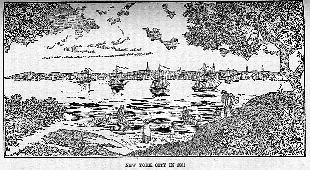The Pilot. Bryant had published among additional poems The Yellow Violet, To a Waterfowl, Green River, A Winter Piece, and A Hymn to Death.
In England.
In comparison with the works of contemporary British writers, this brief list of American publications
appears modest indeed; for by 1825 Wordsworth, Coleridge, and Southey had produced all that was
characteristic of their work; Keats had died in 1821, Shelley in 1822, and Byron in 1824; Scott had written
the last of the Waverley novels; Tom Moore had reached the height of his popularity; Charles Lamb had
published the first series of the Essays of Elia; De Quincey's Confessions of an English Opium-Eater
had appeared in 1821; and Macaulay's first essay, that on Milton, was printed in 1825. And yet, although
meagre when brought thus in comparison with the literature of the mother-land, this beginning of our
national literature is after all not so insignificant as it may seem; it was a beginning, and the question
once derisively put in 1820, by Sidney Smith, a witty Englishman -- "Who reads an American book?" --
could now be answered, in 1825, affirmatively by many of his countrymen. Before considering in detail
the work of the three prominent Americans in this group, let us note briefly some of the minor authors
who are associated with them. 
James K. Paulding, 1778-1860.
James Kirke Paulding was a typical member of the Knickerbocker group; he was of Dutch descent and made good use of the Dutch traditions in his most successful work, a novel, published in 1831, entitled The Dutchman's Fireside. A relative by marriage of William Irving, Paulding was early associated with Washington Irving and his brother, William, in the production of the humorous Salmagundi papers which appeared in 1807. Subsequently Paulding undertook, alone, a new series of the Salmagundi, which came out in 1819-20. During the period of the War of 1812, he produced two clever satires directed at the British navy -- one of these, The Lay of the Scotch Fiddle, being a parody upon Scott's Lay of the Last Minstrel. In 1818, he published The Backwoodsman, a metrical narrative of frontier life in six books -- not a strong performance. Paulding was altogether overshadowed in a literary way by Irving and Cooper, both of whom he attempted to follow. He wrote considerable verse, nothing of which attains to excellence, and of his novels three only call for mention: Koningsmarke, the long Finne, dealing with the Swedish settlements (1823), The Dutchman's Fireside, a study of old Dutch life along the Hudson (1831), and Westward Ho! a tale of Kentucky (1832). Paulding was also the author of a popular life of Washington, published in 1835. He served as Secretary of the Navy under Van Buren.
Fitz-Greene Halleck, 1790-1867.
One of the most energetic members of this New York coterie was Fitz-Greene Halleck, a descendant of the apostle, John Eliot. Halleck was born in Guilford, Connecticut, and in 1811 came to New York and was employed in a banking-house as clerk. He later entered the office of John Jacob Astor, who at his death left Halleck an annuity of forty pounds. Halleck was a poet from his youth, and three or four of his compositions are not likely to slip from the memory of American readers so long as there are schoolboys to declaim the stirring lines of his Marco Bozzaris, or men to quote by the graves of their friends his simple and tender poem, On the Death of Drake.
Of Halleck's poems, three are considered notable:Alnwick Castle (1827), Burns (1827), and Marco Bozzaris (1825). The strength of the poet is in these compositions; but perhaps this is surpassed by the pathos and sincerity of the beautiful elegy on Drake --
"Green be the turf above thee,
Friend of my better days!
None knew thee but to love thee,
Nor named thee but to praise."
A long poem, Fanny, in the style of Byron's Beppo, written in 1819, was popular at the time, but has fallen into oblivion. Halleck retired on his annuity in 1849, returned to his old home in Connecticut and there spent the remainder of his days. Upon the eightieth anniversary of his birth, a monument erected
| Previous chapter/page | Back | Home | Email this | Search | Discuss | Bookmark | Next chapter/page |
See our FAQ for more details.